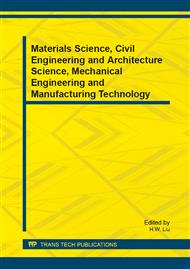p.285
p.289
p.293
p.299
p.304
p.312
p.316
p.322
p.329
Control of Blended Aggregate Gradation for Quality Concrete
Abstract:
As quality aggregate resources are exhausting with massive construction development, inferior aggregate resources somehow are the only picks on the jobsite. The negative impact of inferior aggregates on the workability of fresh concrete is becoming pronounced worrisome on the constructability of concrete structures due mainly to their poor gradation. Therefore, intelligent approach must be found to make fresh concrete workable and consistent while using inferior aggregates. In this study, uniform aggregate gradation curve, Aggregate Coarseness Factor (ACF) and Workability Factor (WF) were used to control the gradation of blended aggregates for achieving desirable workability of fresh concrete. Experimental study and engineering practices indicate that uniform aggregate gradation curve cooperating with ACF and WF are reliable tools to control workability of fresh concrete and obtain quality concrete while only poor aggregates available.
Info:
Periodical:
Pages:
304-311
Citation:
Online since:
January 2014
Authors:
Price:
Сopyright:
© 2014 Trans Tech Publications Ltd. All Rights Reserved
Share:
Citation:


